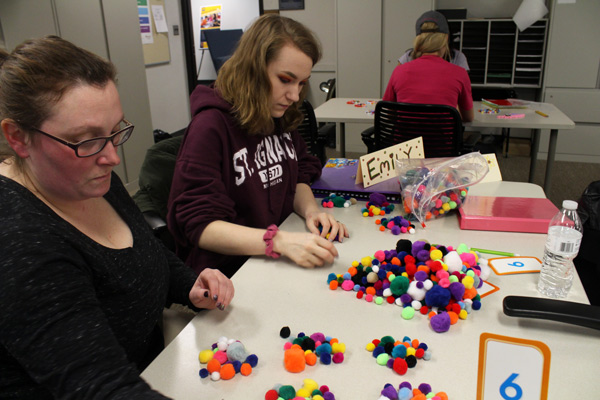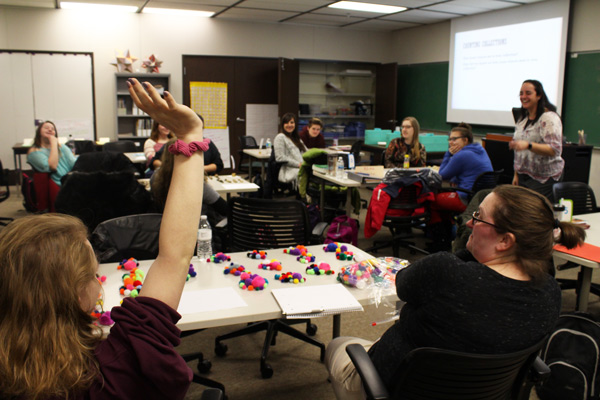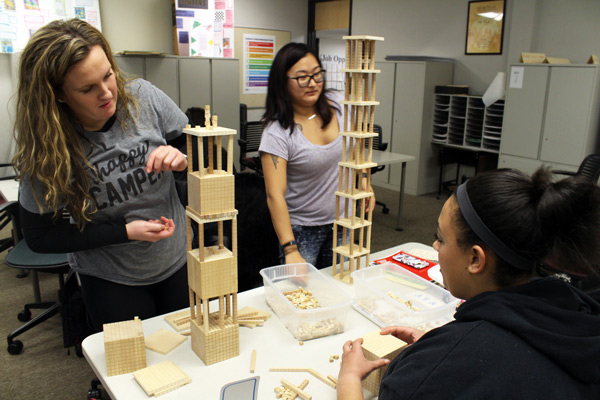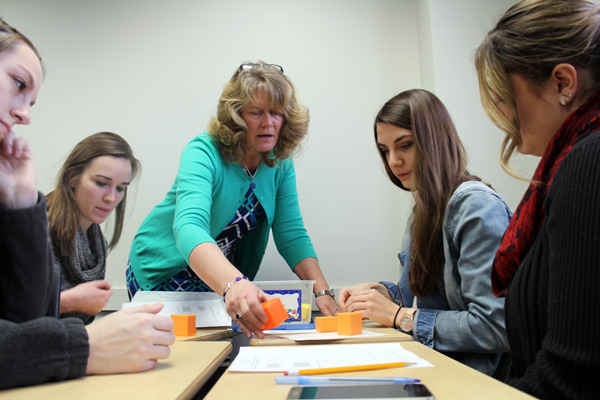As an experienced preschool teacher with an associate’s degree from Mott Community College, Chelsea Horton was not looking forward to taking mathematics education classes at the University of Michigan-Flint when she began the Elementary Education Program.
“I avoided math classes until I absolutely knew I had to take them,” Chelsea recalled. “I went into my first problem-solving class thinking it was going to be a waste of time, but I didn’t know how in-depth it would go into math and math strategies. It’s about the process you use and understanding how you get to an answer.”
In UM-Flint math education courses, students preparing to enter the teaching profession are solving math problems using multiple strategies where incorrect answers are as valuable as correct answers.
Feelings of frustration and disappointment associated with past math courses fade as students engage in intensive group learning activities and begin to understand mathematical concepts and number relationships in a whole new way.
Embracing Mistakes
At UM-Flint, math education courses are designed to take students methodically through the mental processes of understanding mathematical concepts and to see how mastering specific steps helps them to learn to solve more complex problems. This philosophy embraces mistake-making as a critical learning opportunity rather than a simple representation of what a student does not know.
“We’re trying to get students to understand math at a deeper level,” said education lecturer Karin Sippert. “It’s not enough just to be able to get the answer. You have to understand what you’re doing and why. Some problems we give them are open-ended because we want to stretch their brain.”
To do that, UM-Flint requires elementary education students to take eight courses (28 credits) of mathematics in the teacher preparation program. It is a rigorous program that facilitates collaborative learning. Program coordinators say typical professional teacher educator preparation programs require just two math courses in six to eight credits.
In her classes, Chelsea liked listening to other students’ explanations of how they used different math strategies to come up with the same answer. “It helped me to use different strategies that I wasn’t comfortable with before,” she said.

Students in Prof. Cunningham’s class work in pairs and groups, then share which math strategies they used.
Considering How Kids Approach Math
As they work, students keep in mind how the children they’ll be teaching will work the same kinds of problems. Doing addition, subtraction, multiplication, and division with whole numbers becomes a creative thinking process containing multiple possibilities rather than an answer-driven mission.
“We deepen our own understanding of those operations by engaging with the way the child learns these operations,” explained education faculty Elizabeth Cunningham. “We use manipulatives and visual models to make the connections between all of these things. Having that flexibility makes students more responsive to their students to consider what the child knows and where the child might go next in their thinking process.”
In classes, students consider ways to clarify the language commonly used with math to make learning easier and more precise. Eventually, they lead class discussions about the material and explain how an elementary-aged child would comprehend the same concepts.
Eliminating common fears and anxieties associated with both doing and teaching math is a positive outcome of the department’s research-driven design of its math requirements. All UM-Flint elementary education students graduate with minors in both language arts and math.
Verbalizing Problem-Solving Strategies
Not only do students learn to do math in flexible ways, they also must demonstrate to faculty through required competency testing, their ability to verbally explain math problems. Demonstrating this skill shows their deep understanding of math plus their ability to teach the material, and they are given feedback from faculty to sharpen those skills.
A little nerve-wracking at first, the competency testing is actually a nurturing experience between faculty and student, and students come away with greater confidence in their abilities.
“Now I can see myself teaching middle school,” Chelsea said. “I did not want to do any math when I started in the elementary education program. Now I want to teach it.”
In addition to its undergraduate programs, the Education Department is launching a new Master of Arts in Mathematics Education for Elementary and Early Childhood Educators this summer. For more information, please visit www.umflint.edu/education.




